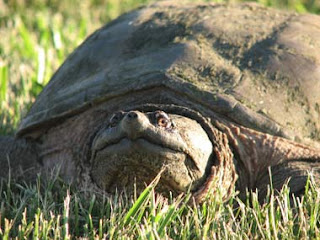Open Days are wondrous things. People with tour-worthy gardens allow in anyone with five dollars in their pocket. Sometimes the gardens are spectacular; sometimes they’re ‘personal’ (a polite word for disappointing). Proceeds from these Open Days go to preserve noteworthy gardens that would otherwise disappear due to neglect or development.
In Litchfield County, even the ‘personal’ gardens are usually worth seeing and we had circled three as sounding especially intriguing. Owners write their own descriptions for the directory and, while some are grandiose, others are masterpieces of understatement. For example: “This Old World-style garden is intimate, with cobbled paths, terraced gardens, raised perennial beds, and reflecting pools. Overlooking the Housatonic River, the property has a distinct French/Italian flavor.” Twenty-eight words. And, as it turned out, I could have shortened it to just eight words: “You have to see it to believe it.”

To get to the garden, you go to West Cornwall. To get to West Cornwall, you go through a genuine, working, one-lane covered bridge across the Housatonic River. Just past the bridge you make a left hand turn on, naturally, River Street. You park and find… a shop: Michael Trapp Antiques. The front of the Greek Revival property gives nothing away. You enter around the side and the garden reveals itself. It is a masterpiece of both whimsy and design, studded with what Trapp calls ‘architectural fragments’. Stone and greenery blend seamlessly. Steps lead to a lower garden – actually, gardens – that border a fast-moving brook that feeds into the Housatonic. A long room, opened to the elements and stuffed with artifacts and objects of natural beauty, merges into the hillside. It is a garden of the imagination that demands exploration of every nook.
Trapp’s garden has been nearly twenty years in the making. The antique shop once also served as his home, but the garden’s (and store’s) growing fame became a problem. To quote a 2007 New York Times article, “People he had never met would arrive at all hours. They didn’t seem to care that the store was open only on Saturdays and Sundays or by appointment, and that the garden could only be visited through the Open Days program. ‘They walked in and out of my house all day long, thinking I wouldn’t mind so long as they were nice,’ Mr. Trapp said.”
From West Cornwall, we traveled overland to Falls Village. I confess that before I visited the Michael Trapp garden, the name meant nothing to me. But ‘the Garden of Bunny Williams’ is etched into the mind of anyone who has ever opened a gardening or décor magazine. This is her ‘weekend retreat’ – fifteen intensively planted acres – from her New York City interior decorating business.
 Ms. Williams was in her garden, greeting a horde of visitors. She had out tea, lemonade, cookies and bottled water. It was a welcome gesture because truly exploring all of her gardens would be a day-long (or more) proposition. Visitors are first directed to a ‘rustic Greek Revival-style pool house folly’ (her precisely accurate description), which is a jumping-off point to a series of woodland trails. These eventually lead down to the main house. Or, or be more accurate, main houses (one is a converted barn). Around them are her set pieces: sunken gardens, perennial borders around a fish pond, flower- and herb-filled vegetable gardens, conservatories and greenhouses. They are a photo shoot awaiting only the arrival of the delegation from the high-end lifestyle magazine. Every detail is perfect. Everything is balanced, there is meticulous planning behind every plant in the garden.
Ms. Williams was in her garden, greeting a horde of visitors. She had out tea, lemonade, cookies and bottled water. It was a welcome gesture because truly exploring all of her gardens would be a day-long (or more) proposition. Visitors are first directed to a ‘rustic Greek Revival-style pool house folly’ (her precisely accurate description), which is a jumping-off point to a series of woodland trails. These eventually lead down to the main house. Or, or be more accurate, main houses (one is a converted barn). Around them are her set pieces: sunken gardens, perennial borders around a fish pond, flower- and herb-filled vegetable gardens, conservatories and greenhouses. They are a photo shoot awaiting only the arrival of the delegation from the high-end lifestyle magazine. Every detail is perfect. Everything is balanced, there is meticulous planning behind every plant in the garden.There is also a gardener. We met him and chatted briefly. He was able to precisely name a woodland peony that had caught Betty’s eye and he even provided a source for it.
On a different day and in a different place, I might have objected to all this perfection. But this was a house and garden as objects to be admired. And, Ms. Williams actually lives there. She has created a space that few could ever afford to mimic, but darn it if she didn’t open up her private retreat for us to wander at will – and all for a worthy cause.
We also visited a third garden in the area. It was a lavish property and no expense was spared by the owner to have a designer create the perfect series of gardens. Everyone received a map of the premises printed on vellum-type paper. The garden was, ummm, very personal.



